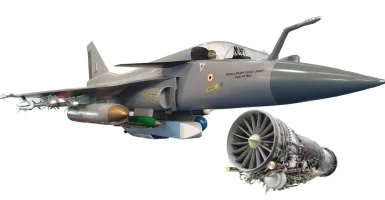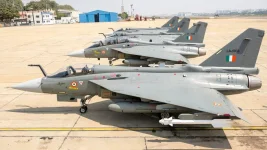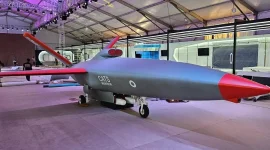- Views: 5K
- Replies: 17
India's domestically developed Light Combat Aircraft (LCA), the Tejas Mk-1A, is approaching a significant phase as it undergoes final evaluations, including additional weapons firing and electronic warfare (EW) system trials. These tests are crucial to confirm the aircraft meets the stringent operational requirements set by the Indian Air Force (IAF).
Sources familiar with the programme suggest the IAF is expected to induct the first fully compliant Tejas Mk-1A aircraft early in the 2025-26 financial year, possibly between late April and early May 2025.
This enhanced version promises significant upgrades over the initial Tejas Mk1, particularly in its avionics, radar, and electronic warfare capabilities, making it a more potent asset for national defence.
The ongoing trials commenced after the successful maiden flight of the first Tejas Mk-1A production aircraft, designated LA-5033. This inaugural flight occurred on March 28, 2024, from the Hindustan Aeronautics Limited (HAL) facility in Bengaluru, lasting approximately 18 minutes.
It's important to note that this initial flight utilized older reserve engines (Category B F-404) from the earlier Tejas Mk-1 production line. This interim measure was adopted due to delays in receiving the specifically contracted new GE F-404-IN20 engines, allowing HAL to proceed with flight testing while awaiting the upgraded powerplants necessary for the Mk-1A to reach its full performance potential.
A major development occurred recently with the arrival of the new engines. On March 25, 2025, GE Aerospace dispatched the first F-404-IN20 engine under the contract, which is expected to arrive in India in early April. HAL is also reportedly anticipating the delivery of a second engine shortly.
Receiving these engines is a critical step, enabling HAL to prepare at least two Tejas Mk-1A aircraft equipped with the intended powerplants for formal handover to the IAF, aligning with the projected late April or early May 2025 timeline.
The delivery of these engines resolves previous uncertainties surrounding the programme's schedule. The engines are part of a larger contract signed in 2021, valued at $716 million, for HAL to produce 83 Tejas Mk-1A jets for the IAF, comprising 73 fighter variants and 10 trainer aircraft.
GE Aerospace has outlined a delivery plan, committing to supply 12 engines by December 2025 and increasing production to 20 engines annually from 2026 onwards. This schedule supports HAL's production target of delivering between 16 and 24 Tejas Mk-1A jets per year.
The new F-404-IN20 engines incorporate advanced technologies, such as single-crystal turbine blades and a higher-flow fan, providing increased thrust (up to 85 kN) and enabling the enhanced performance and manoeuvrability expected from the Mk-1A variant.




